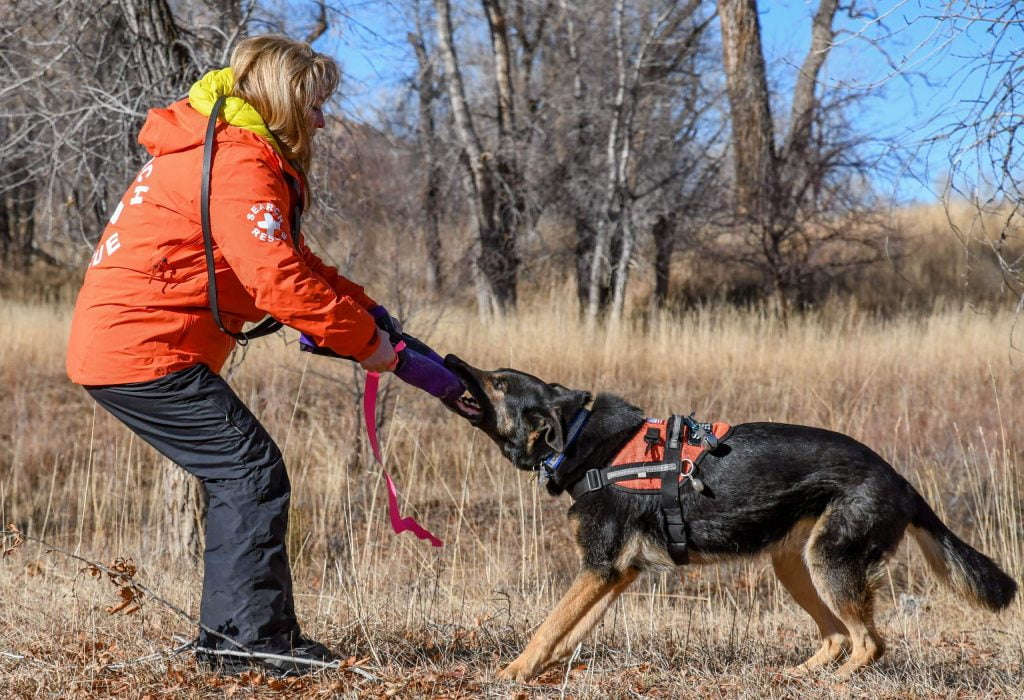Table of Contents
Training a dog for search and rescue (SAR) is a rewarding yet challenging process that requires dedication, patience, and expertise. The best training a dog for search and rescue tips involve foundational training, specialized skills, and consistent practice. In this guide, we provide seven essential steps to help you prepare your dog for this critical role.

Top Steps for Training a Dog for Search and Rescue
1. Start with Basic Obedience Training
Before starting search and rescue training, ensure your dog has mastered basic obedience commands such as sit, stay, come, and heel. Obedience training provides a solid foundation and ensures your dog is responsive to commands. For more on basic obedience, visit AKC Basic Commands.
2. Socialize Your Dog
Proper socialization is crucial for a search and rescue dog. Expose your dog to various environments, people, and other animals to help them become confident and adaptable. Socialization reduces anxiety and ensures your dog can work effectively in diverse situations. For socialization tips, see ASPCA Socialization Tips.
3. Build a Strong Bond with Your Dog
A strong bond between you and your dog is essential for effective search and rescue training. Spend quality time with your dog, engage in play, and practice positive reinforcement. A strong relationship ensures your dog is motivated to work with you and respond to your commands. For more on bonding with your dog, visit PetMD Bonding Tips.
4. Introduce Scent Training
Scent training is a core component of search and rescue work. Start by teaching your dog to recognize and follow specific scents. Use items with familiar scents and gradually introduce new ones. Reward your dog with treats and praise when they successfully locate the scent. For more on scent training, see AKC Scent Work Training.
5. Practice Search Techniques
Introduce search techniques such as area searches, trailing, and tracking. Practice in various environments and scenarios to build your dog’s skills. Use positive reinforcement to encourage your dog and make training sessions enjoyable. For more on search techniques, visit The Spruce Pets Tracking Training.
6. Ensure Physical Fitness
Search and rescue work requires a high level of physical fitness. Ensure your dog gets regular exercise to build strength, endurance, and agility. Activities like running, swimming, and agility training can help keep your dog in top shape. For fitness ideas, see AKC Exercise Ideas.
7. Join a Search and Rescue Team
Joining a search and rescue team provides valuable training opportunities and resources. Experienced handlers can offer guidance and support as you train your dog. Participate in training exercises and real-life missions to gain experience and improve your dog’s skills. For information on joining a team, visit National Association for Search and Rescue (NASAR).
Conclusion on Training a Dog for Search and Rescue
Training a dog for search and rescue is a demanding but fulfilling endeavor. By following these essential steps on training a dog for search and rescue, you can prepare your dog for this vital role. Remember to be patient, consistent, and always use positive reinforcement. For more advice on dog training, check out our Pet Care Guide.
FAQs on Training a Dog for Search and Rescue
How long does it take to train a dog for search and rescue?
The training duration varies depending on the dog’s age, breed, and temperament. On average, it can take 1-2 years of consistent training to fully prepare a dog for search and rescue work.
Can any dog be trained for search and rescue?
While many dogs can be trained for search and rescue, certain breeds like German Shepherds, Labrador Retrievers, and Border Collies are commonly preferred due to their intelligence, work ethic, and physical capabilities.
What age should I start training my dog for search and rescue?
It’s ideal to start training puppies as early as possible, typically around 8-10 weeks old. However, older dogs can also be trained successfully with the right approach and patience.
Are there specific certifications for search and rescue dogs?
Yes, there are certifications offered by various organizations, such as the National Association for Search and Rescue (NASAR) and the American Rescue Dog Association (ARDA). These certifications validate the dog’s skills and readiness for SAR work.
How do I keep my search and rescue dog motivated?
Use positive reinforcement, such as treats, praise, and playtime, to keep your dog motivated. Ensure training sessions are fun and varied to prevent boredom and maintain their interest.
Can I train my dog for search and rescue on my own?
While you can start basic training on your own, joining a search and rescue team or working with a professional trainer is highly recommended for specialized training and experience.











